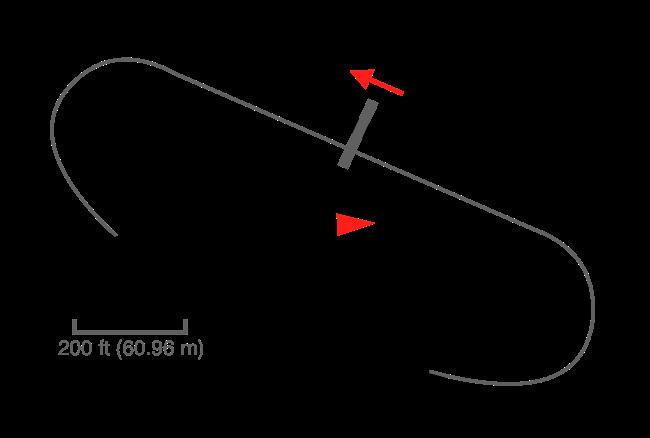Official name Virginia 500 | ||
 | ||
Date April 25, 1965 (1965-April-25) Course Permanent racing facility0.525 mi (0.844 km) Distance 500 laps, 262.5 mi (442.4 km) Weather Cold with temperatures reaching up to 57 °F (14 °C); wind speeds up to 8.9 miles per hour (14.3 km/h) | ||
The 1965 Virginia 500 was a NASCAR Grand National Series (now Monster Energy NASCAR Cup Series) event that was held on April 25, 1965, at Martinsville Speedway in Martinsville, Virginia.
Contents
Fred Lorenzen, the winning driver of this racing event, would become the only driver to successfully complete four Martinsville events in the row with a first-place finish.
Background
Martinsville Speedway is one of five short tracks to hold NASCAR races. The standard track at Martinsville Speedway is a four-turn short track oval that is 0.526 miles (0.847 km) long. The track's turns are banked at eleven degrees, while the front stretch, the location of the finish line, is banked at zero degrees. The back stretch also has a zero degree banking.
Summary
The racing event (in what is now known as the Monster Energy NASCAR Cup Series) took approximately three hours and forty-four minutes to completely finish. Five cautions were handed out by NASCAR officials for forty-nine laps. Fred Lorenzen beat Marvin Panch by two car lengths in front of ten thousand people. Curtis Crider retired from NASCAR after competing in this race. Most of the contenders in the race were driving Ford vehicles with the model years ranging from 1963 through 1965. Terry Murchinson had a clutch problem with his unsponsored 1964 Ford Galaxie after only two laps of racing and became the last-place finisher of the day.
Total winnings of the race were $20,725 ($157,505.62 when adjusted for inflation). Each driver took home winnings between $4,350 ($33,059.08 when adjusted for inflation) and $250 ($1,899.95 when adjusted for inflation) on an individual basis. The transition to purposely-built racers began in the early 1960s and occurred gradually over that decade. Changes made to the sport by the late 1960s brought an end to the "strictly stock" vehicles of the 1950s; most of the cars were trailered to events or hauled in by trucks.
Ford ended up dominating NASCAR in 1965. This came about because Dodge discouraged their vehicles from participating in the league due to the Hemi engine being banned from competition. Petty Enterprises ended up going into drag racing until Dodge solved its issues with the people who ran NASCAR at that time. All but one of the top ten finishers drove a Ford vehicle; the sixth-place finisher drove a Dodge (which no longer races in the NASCAR Cup Series as of 2013).
Finishing order
† signifies that the driver is known to be deceased
* denotes that the driver did not finish the race
